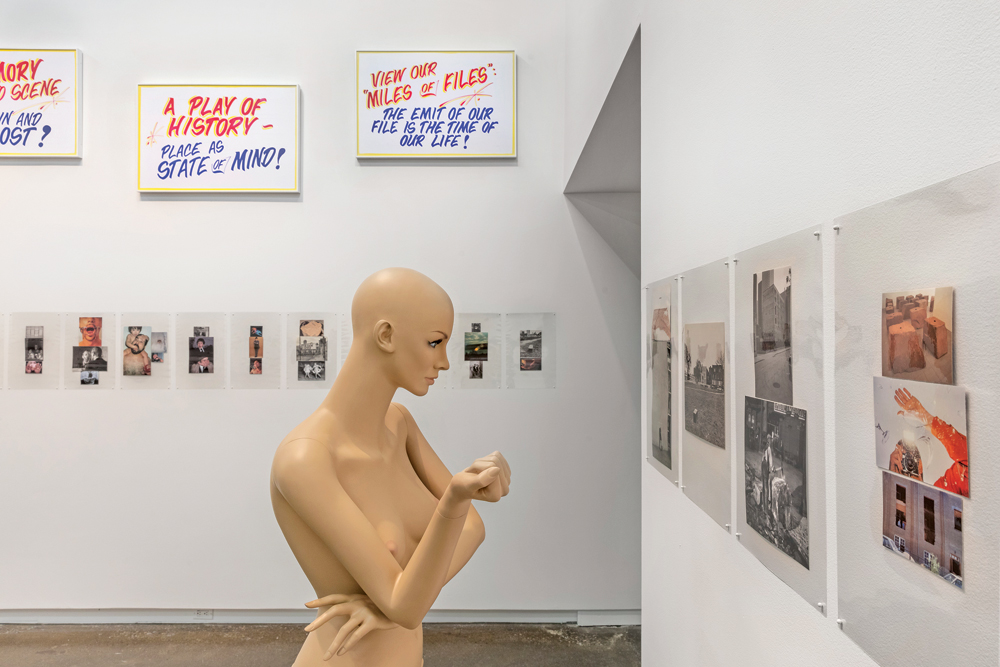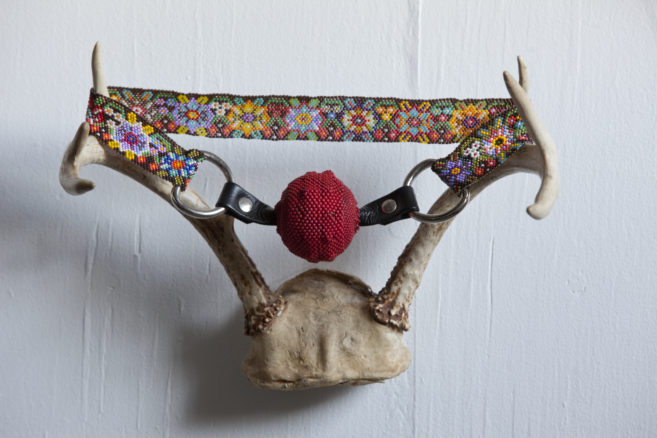“Historical continuity is the Achilles heel of Toronto artmaking.” I wrote these words in the Spring 2009 issue of Public—eight years ago! Reflecting on this statement today, from a different context and in a different publication, raises the question, What does this mean?
Certain thoughts come to mind in response. The first is that “history” is not synonymous with the mere passing of time. The fact that something happened in the past—an act of writing nearly a decade ago, for instance—does not, in itself, make that act historical. Something else is needed: a subsequent act that bridges the past act of writing, and relates it with the present act of connecting the dots. It is only at this subsequent meeting point that past and present reveal their historical dimensions.
The second thought that comes to mind is: history matters. It’s worth recognizing the strangeness of this truism. Writing in the catalogue for the Power Plant’s inaugural exhibition, “Toronto: A Play of History (Jeu d’histoire)” in 1987, artist Ian Carr-Harris put it like this: “History is a bit like the tar-baby: stuff sticks to it.” A decade later, in her collection of essays Symbolization and Its Discontents, critic Jeanne Randolph described it in terms of the magnetism of an amenable object: the “availability of an object to the elaborations, distortions and yearnings of the person who is interacting with it…. The subconscious…plucks from all sensations, images and concepts what it needs to keep going.”
History, then, does not simply entail narrating “what really happened.” Rather, history is the process of determining what, among past events, is useful and needful for plucking in the present. What matters? To tell history is to respond to our present desires by adopting past events; this is done as a way of making those unresolved aspects of our present situation apparent to us as if for the first time.
Different cultural environments have developed their own ways of narrating history. In some places, stories of domination are the ones that stick. In other places, the stories that take hold are those of loss and defeat. In Toronto, we tend toward stories that remind us of the mechanisms of erasure. As curator Wanda Nanibush recently observed, “This city tends to bury things—histories, neighbourhoods, waterways.” This is precisely what makes historical narratives of erasure so useful (so “amenable”) in this place.
What does “Achilles heel” mean? In Toronto, it means confusing erasure for an absence of history. It means living in a place where acts of connecting-the-dots are inadequate to the task of making sense of the ever-changing, multi-dimensional place I call home.
A lot has happened in Toronto since 2009. The greater metropolitan population surpassed the six-million mark. All of the 588 schools in the Toronto District School Board now start the day with an Indigenous land acknowledgement. And Honest Ed’s—the fantastically tacky landmark located at the intersection of Bloor and Bathurst Streets—closed its doors this past December, after 73 years in business, to make way for new development.
How do residents of non-British, non-European backgrounds challenge Toronto’s existing hierarchies? How do we develop forms of recognition between Indigenous and non-Indigenous people within a colonial setting? How do we preserve the markers that enable cultural memory in a capitalist city where profit alone determines what has value and what does not?
Most obviously, “Achilles heel” refers to our vulnerabilities—those unresolved aspects of our present situation that make demands of us that we cannot ignore. It’s worth making friends with the ways in which our home makes its claim upon us. It is, after all, on the basis of our vulnerabilities that the desire arises to pluck, magnetize, elaborate and rearrange the “stuff” that surrounds us—and to establish new, sometimes unforeseeable, points of departure.
Luis Jacob is a Toronto-based artist, writer, curator and educator. This post is adapted from his keynote essay in the Fall 2017 issue of Canadian Art, which is themed on The Idea of History.

 Installation view
of Luis Jacob’s “Habitat” at Gallery TPW, 2017. Photo: Toni
Hafkenscheid.
Installation view
of Luis Jacob’s “Habitat” at Gallery TPW, 2017. Photo: Toni
Hafkenscheid.






